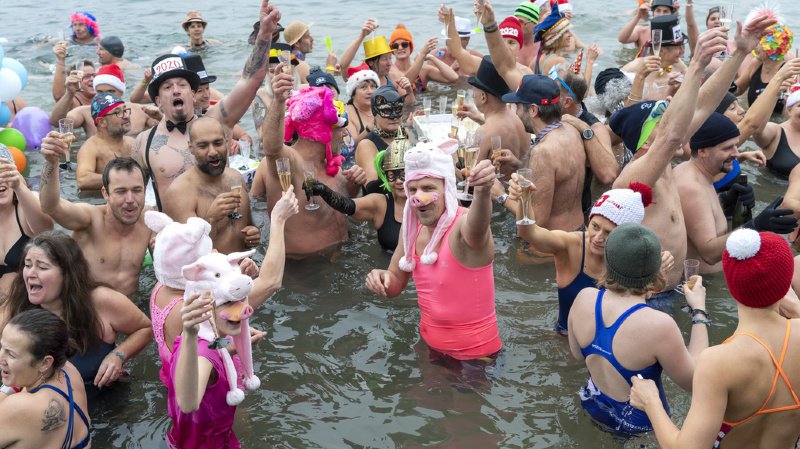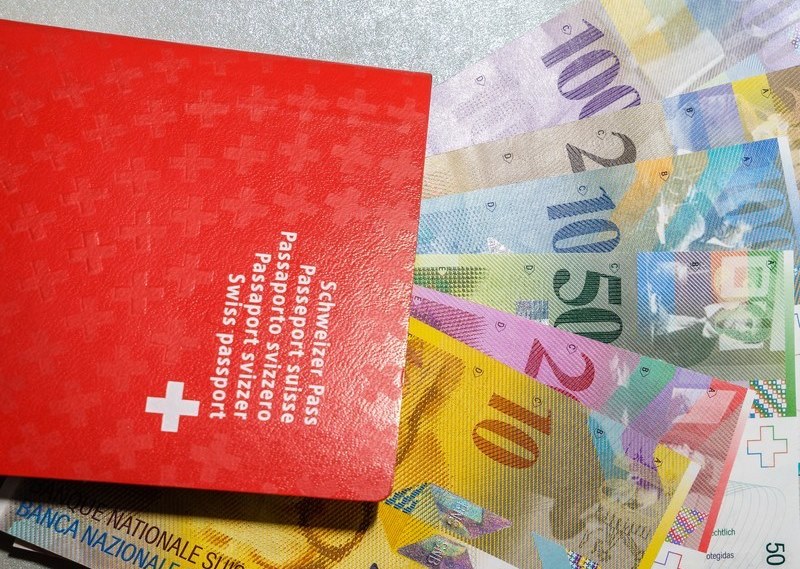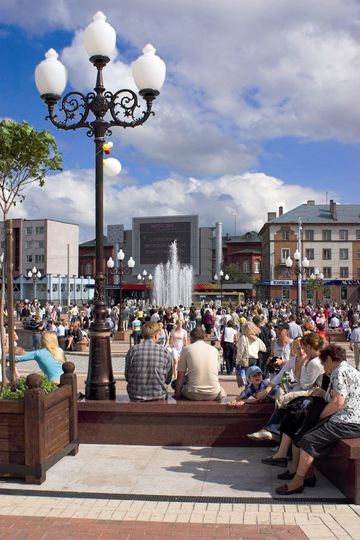Half a century ago, amid the ruins of the former Eastern Prussia, there appeared a new Russian region – the Kaliningrad region. Today it is one of the prettiest regions of Russia, a region of unique nature and an unusual history. It is a combination of picturesque places and memorials of unique architecture, preserving echoes of the past.
This new era started in 1946, when part of the German province of Eastern Prussia was transformed into the Koenigsberg region and entered the Russian Federation. After the collapse of the Soviet Union, the Kaliningrad region acquired enclave status.
This resulted from its specific geographic location, as well as from its isolation from the rest of Russia. The Kaliningrad region is separated from Russia by Lithuania and Belorussia in the North and East and it has a common border with Poland in the South. It is the only region which is separated from Russia by other countries, with the nearest region in Russia, the Pskov region, located 600 kilometers away by rail.
The region has a beneficial economic and geographical position near the waters of the non-freezing Baltic Sea. The region’s economy is closely linked to the sea. It plays a significant role in both the country’s fishing industry and the export/import trade ties. The main market specialization of the region is the fishing industry, as well as machine building, paper manufacturing and amber industries.
The world’s largest amber field (around 90% of world reserves) is located in the region. Amber reserves are estimated in the range of 350 thousand tons. Besides amber, reserves of oil and natural gas, rock salt, brown coal and turf have been found in the region. Around 1/5 of the region’s territory is covered with forests of mainly pine and large-leaved trees.
The Kaliningrad seashore is famous for its mild climate and wide beaches, which span a total of 100 kilometers. Nature generously gifted this region with picturesque landscapes and unique healing resources, such as mineral water and healing dirt. All this makes the Kaliningrad region very attractive for tourists. In the beginning of the century, the resorts located in the region were very popular with Europeans.
The administrative centre of the region is the city of Kaliningrad (the former Koenigsberg). Founded by the Crusaders, it was given the name of Koenigsberg, which means the Royal Mount. In 1525 the first protestant state – the Prussia dukedom - was established, with its capital in Koenigsberg. Koenigsberg University was founded in 1544, which became a central attraction for men of science and culture from Germany, Poland and Lithuania. Outstanding figures of German culture and science such as the great philosopher Emmanuel Kant, the famous German writer Ernest Theodore Amadey Hoffman, astronomer Friedrich Besseland, and composer Richard Wagner lived here.
Numerous destructive wars befell the Prussian territory.
The biggest among them were the Seven Years War, the Napoleonic Wars, and the First and the Second World Wars. The city was destined to become an intersection of different historical and cultural traditions, a shelter for different nationalities. Russian, German, and French could be heard in the streets.
Today Kaliningrad is a huge non-freezing sea port and a garden-city of regional importance, whose new image combines cultural and business activities. As is its historic tradition, this city has been organically combining German and Russian heritage, as well as old and modern architecture, representing a bridge between Europe and Russia. uKaliningrad Exclave: In late September 2005, deputy parliamentary speaker Georgy Boos was appointed governor of the Kaliningrad Region, a Russian exclave on the Baltic Sea. In an exclusive interview with FC Novosti, the former head of the ministry of taxes and levies, one of the country’s principle controlling agencies, spoke about the social and economic outlook of the region.
Drawing up a budget is a key task for the governor of any region. Did you drawn on your experience as head of the country’s main tax inspection agency while doing this for the Kaliningrad Region, where the presence of a certain “shadow economy” is believed to be very high? It was indeed a significant undertaking, and has not yet been fully organized. We are trying to expose elements of this shadow business and intend to fight it until it is eliminated. As of now, the main element of the region’s shadow economy is not so much shadow capital as “shadow payments” and income. In itself, such an economy is absolutely illegal, where enterprises are working openly, but without paying proper taxes to all budget levels, which hinders the rate of social development.
Counterfeit products are an aspect of this shadow economy, but under-the-table payments constitute the main part. In our opinion, employers should be held criminally, I repeat, criminally responsible for this. This is my firm belief.
What is your opinion of the investment climate of the region? Are there investment properties specific to this exclave’s economy and social sphere, especially now that it has been granted the status of a special economic zone? I believe the investment attraction of the region to be very high, owing to its proximity to European states, as well as its special zone status. The region is Russia’s ambassador to Europe, which is why we are creating favourable and equal opportunities for large and small investors. We would like both Russian and foreign capital to come together in the Kaliningrad Region, with a view to creating modern enterprises using the world’s best and most advanced technologies.
In our opinion, capital should be channeled primarily into agriculture, the development and construction of new export-oriented production facilities, the modernisation of tourism and resorts, the creation of industrial innovation parks, and the improvement of infrastructure. These are the five key areas where we would like investment to go.
We have the ability to create a powerful logistics centre for ensuring quick access to commodities and labour in central Europe. We intend to increase the number of tourists in the region from 330,000 now, to 1.2 million in 2008, which necessitates the modernisation and construction of water and peloid resorts, the construction of new hotels, and the reconstruction and restoration of architectural monuments.
The production of amber (the region holds 90% of the world’s amber reserves), shipbuilding and ship repair, and other traditional sectors also fit in with our investment strategy. We know that the region, as a special economic zone, will not compete with the rest of Russia but with its closest neighbours – Lithuania and Poland, which also have free economic zones that receive strong financial support from more industrialised European states.
Is this specific to the exclave? What other problems and advantages of the region’s geopolitical situation have you identified? Our main problem is communication with “mainland” Russia. Sixty percent of our young people have never been to other parts of Russia, but have visited Poland, Lithuania and Germany more than once. It is rather expensive and time-consuming to visit Moscow, St Petersburg or Smolensk. Our residents mostly go to the neighbouring European countries by car – 200,000 of the 240,000 cars registered with traffic inspection are privately owned. They sometimes go to Europe for a day, and getting an entry visa for European travel is as easy as getting a visa for crossing the Lithuanian border on the way “from Russia to Russia.” I cannot get used to people here saying, “I’m going to Russia”, when they intend to visit Moscow or Kursk.
This suggests a subconscious change of mentality, a growth of alienation from the state and a loss of national identity. One of the tasks of the regional government is to reverse these negative trends.
We have launched a programme entitled “We Are Russians”, under which more than 5,000 children have visited Moscow and St. Petersburg on funds from the regional budget this year. It is also planned to offer concessions on various transport systems to encourage them to lower prices of railway and air tickets. We are also pinning our hopes on Russian diplomacy, which should work to establish more friendly conditions for crossing the Lithuanian border.
The spotlight in Russia is on prioritised national projects to radically improve healthcare, education and agriculture and to provide affordable housing for the people. What are the specific details of implementing these in the Kaliningrad Region? Theoretically, the Kaliningrad exclave is no different, in this respect, from other regions of Russia. The only thing that sets it apart is that it is a pilot-region where new models for cooperation, between Russia and the countries of the European Union, are tested.
We are a business card for Russia in Europe, and so should display our expertise and achievements in a proper way. In this way, all such projects are important to us.
What we cannot accept, though, is the principle of building one medical centre for several districts, as is stipulated in the national healthcare project. As for the other national projects, we can implement all of these, with due financing, since these are investments which should elevate the region to the highest level in Europe.













